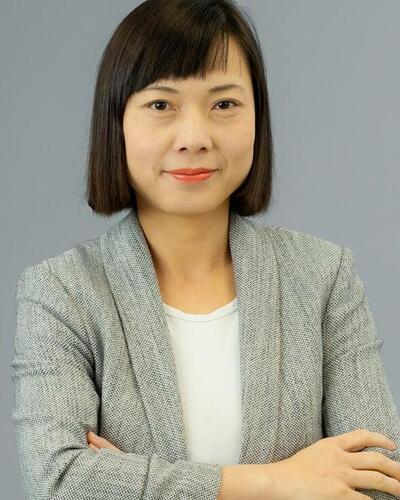Kristina Xiao Liang
- E-mailxiao.liang@uib.no
- Visitor AddressHaukeland Universitetssykehus Laboratoriebygget, 7. etg. Heis øst5009 Bergen
- Postal AddressPostboks 78045020 Bergen
Our mitochondrial stem cell research group is located at the Department of Clinical Medicine (K1), University of Bergen.
We are using stem cells transformed from a patient's own fibroblasts to study mitochondrial diseases caused by POLG mutations. The goal of our research group is to conduct iPSC-based in vitro model system studies to increase the understanding of mitochondrial diseases, identify the underlying mechanisms of this common mitochondrial diseases and develop an iPSC-based platform to test therapeutic agents.
We have established the capabilities and facilities required for the reprogramming and differentiation of iPSCs, enabling the study of neuronal cells from patients and healthy controls. Validated iPSCs can differentiate into neural stem cells (NSCs) and compartmentalized neuronal subtypes, as well as astrocyte/glial cell populations. We have also recently developed 3D brain organoids to study disease mechanisms and test treatments.
Our broad research aim is to determine the biological and pathological basis of neurodegenerative diseases associated with mitochondrial dysfunction, and we aim to develop this and conduct more in-depth molecular phenotyping studies. Since the group is also part of the Neuro-SysMed Center, we will use our model and stem cell approach to study other neurodegenerative diseases such as Parkinson's and Alzheimer's.
See also our group website: Mitochondrial Stem Cell Research | Mitochondrial Medicine & Neurogenetics (MMN) | UiB
2022 - current: Course manager for the Neuro-SysMed Junior Symposium (NEUROSYSM910), Department of Clinical Medicine (K1), University of Bergen
2022 - current: Course coordinator for the Neuro-SysMed Seminars and symposium (NEUROSYSM920), Department of Clinical Medicine (K1), University of Bergen
2021 - 2022: Course assistance for Human Physiology (OD2FYS, FARM280), Department of Biomedicine, University of Bergen
- (2024). The application of brain organoid for drug discovery in mitochondrial diseases. International Journal of Biochemistry and Cell Biology.
- (2024). The NAD<sup>+</sup> Precursor Nicotinamide Riboside Rescues Mitochondrial Defects and Neuronal Loss in iPSC derived Cortical Organoid of Alpers' Disease. International Journal of Biological Sciences. 1194-1217.
- (2024). Meeting Summary of The NYO3 5th NO-Age/AD Meeting and the 1st Norway-UK Joint Meeting on Aging and Dementia: Recent Progress on the Mechanisms and Interventional Strategies. The journals of gerontology. Series A, Biological sciences and medical sciences.
- (2024). Interplay of mitochondria and diabetes: Unveiling novel therapeutic strategies. Mitochondrion (Amsterdam. Print).
- (2024). Hallmark Molecular and Pathological Features of POLG Disease are Recapitulated in Cerebral Organoids. Advanced Science.
- (2023). POLG genotype influences degree of mitochondrial dysfunction in iPSC derived neural progenitors, but not the parent iPSC or derived glia. Experimental Neurology. 16 pages.
- (2023). Deoxyribonucleoside treatment rescues EtBr-induced mtDNA depletion in iPSC-derived neural stem cells with POLG mutations. The FASEB Journal. 15 pages.
- (2023). Application of Flow Cytometric Analysis for Measuring Multiple Mitochondrial Parameters in 3D Brain Organoids. Journal of Visualized Experiments. 1-18.
- (2022). POLG mutations lead to abnormal mitochondrial remodeling during neural differentiation of human pluripotent stem cells via SIRT3/AMPK pathway inhibition. Cell Cycle. 1178-1193.
- (2022). MiR-152-5p suppresses osteogenic differentiation of mandible mesenchymal stem cells by regulating ATG14-mediated autophagy. Stem Cell Research & Therapy.
- (2022). Inhibition of autophagy reduces the rate of fluoride-induced LS8 apoptosis via regulating ATG5 and ATG7. Journal of biochemical and molecular toxicology. 1-12.
- (2022). Comparing the mitochondrial signatures in ESCs and iPSCs and their neural derivations. Cell Cycle. 2206-2221.
- (2021). Nicotinamide riboside and metformin ameliorate mitophagy defect in induced pluripotent stem cell-derived astrocytes with POLG mutations. Frontiers in Cell and Developmental Biology. 1-20.
- (2021). MAP kinase phosphatase MKP-1 regulates p-ERK1/2 signaling pathway with fluoride treatment. Biochemical and Biophysical Research Communications - BBRC. 65-72.
- (2021). Flow cytometric analysis of multiple mitochondrial parameters in human induced pluripotent stem cells and their neural and glial derivatives. Journal of Visualized Experiments.
- (2021). Ferroptosis Holds Novel Promise in Treatment of Cancer Mediated by Non-coding RNAs. Frontiers in Cell and Developmental Biology. 1-14.
- (2020). The RBP1–CKAP4 axis activates oncogenic autophagy and promotes cancer progression in oral squamous cell carcinoma. Cell Death & Disease. 1-16.
- (2020). Patient-specific neural progenitor cells derived from induced pluripotent stem cells offer a promise of good models for mitochondrial disease. Cell and Tissue Research. 15-30.
- (2020). N-acetylcysteine amide ameliorates mitochondrial dysfunction and reduces oxidative stress in hiPSC-derived dopaminergic neurons with POLG mutation. Experimental Neurology.
- (2020). Disease-specific phenotypes in iPSC-derived neural stem cells with POLG mutations. EMBO Molecular Medicine. 1-26.
- (2020). AChR antibodies show a complex interaction with human skeletal muscle cells in a transcriptomic study. Scientific Reports. 13 pages.
- (2020). A method for differentiating human induced pluripotent stem cells toward functional cardiomyocytes in 96‐well microplates. Scientific Reports. 1-14.
- (2019). Metabolic reprogramming of normal oral fibroblasts correlated with increased glycolytic metabolism of oral squamous cell carcinoma and precedes their activation into carcinoma associated fibroblasts. Cellular and Molecular Life Sciences (CMLS). 1-19.
- (2018). W748S POLG mutation induced mitochondrial changes in hiPSC-differentiated NSCs.
- (2018). Isolation and characterization of cells derived from human epithelial rests of Malassez. Odontology : official journal of The Society of the Nippon Dental University. 1-10.
- (2017). Prevalence of dentin hypersensitivity among the residents of Xi'an city, China. Acta Odontologica Scandinavica. 387-393.
- (2016). Phenotypic plasticity determines cancer stem cell therapeutic resistance in oral squamous cell carcinoma. EBioMedicine. 138-145.
- (2014). Human oral cancer cells with increasing tumorigenic abilities exhibit higher effective membrane capacitance. Integrative Biology. 545-554.
More information in national current research information system (CRIStin)
Multiple iPSC-based in vitro model systems.
- 2D: neural stem cells, DA neurons, motor neurons, generic neurons, astrocytes, oligodendrocytes and cardiomyocytes.
- 3D: mini-brain organoid system
- Co-culture systems
Modeling diseases using neural stem cells, neurons, astrocytes, and astrocyte-neurons interactions.
